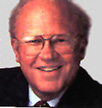
Ken
Blanchard
In a new book I co-authored with Michael O'Connor titled Managing by Values, we explain how an organization can become a "Fortunate 500" company by learning how to define, communicate and align their values with their organizational practices. A Fortunate 500 company is one determined by the:
Managing by values begins by identifying a core set of operating values. Many companies claim they have a set of core values, when what they actually have is a list of generic business beliefs that everyone would agree with, such as having integrity, making a profit, responding to customers, etc. Such values have meaning only when they are further defined in terms of how people actually will behave and rank-ordered to reveal priority.
Rather than focusing solely on results, Fortunate 500 companies first emphasize values&emdash;the beliefs, attitudes and feelings that top management has about employees, customers, quality, ethics, integrity, social respon-sibility, growth, stability, innovation and flexibility. In order to survive, an organization today must know what it stands for and on what principles it will operate. Once an organization has a clear picture of its mission and values, it can evaluate its management practices and align them with the articulated mission and values.
The next step, communicating core values, involves making sure that your values are evident to all stakeholders&emdash;employees, customers, suppliers, stockholders and the community. Norstan, a telecommunications company headquartered in Minneapolis, operationalized their values in terms of their major stakeholders:
The final step is to see if these values are actually practiced in day-to-day operations. This step represents about 80 percent of the managing by values effort. To be effective, values and strategies need to bring together the energies of all people in the organization, especially those people dealing with the company's various publics.
Aligning the behavior of the organizational leaders with the key corporate values is inherent in our concept of a Fortunate 500 company. For example, if top management indicates that they value innovation and flexibility in the organization, but they have an authoritarian-based bureaucracy that discourages flexibility, the organization has an alignment problem.
Holt Companies, a producer and distributor of heavy equipment engines for the construction and energy industries based in San Antonio, Texas, provides a good example of how the values/practices alignment can work. Holt found that following the steps of the managing by values process led to many frank discussions among top management, which included feedback to CEO Peter Holt.
"It was very uncomfortable," admits Holt. "I was forced to confront the gaps between what I thought about myself and how others perceived me. I had always thought I had an inspirational style, but it turned out I had only been inspiring myself!"
Holt's desire to transform himself and improve the working environment for all of his employees led to a shift in priorities for the business.
"As a result of those initial meetings, Peter admitted he had been placing too much emphasis on growth for growth's sake and not enough on stability," comments Barney Fitton, general parts manager at Holt of Ohio Co. in Columbus, Ohio. "But, after listening to us, he was willing to change so that we could focus on long-term, controlled growth and build stronger relationships with our employees and customers."
In companies where there is a high degree of alignment between key values and practices around customers and employees, financial results and stockholders' desire will follow. Alignment empowers people to act congruently. That makes for loyal customers and employees, and a productive environment.
© 1997 Blanchard Management Report, Blanchard Training and Development Inc. Telephone (800) 728-6000, ext. 5201, fax (619) 743-5030 or e-mail kblanchard @qualitydigest.com.



